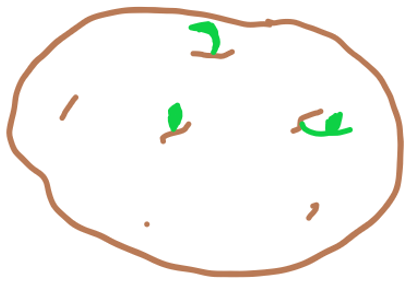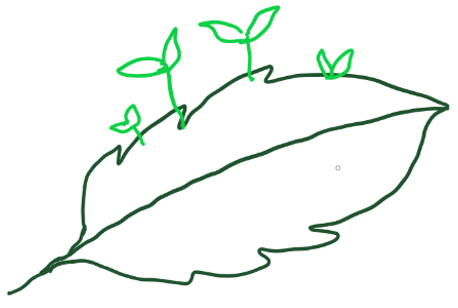This set of Class 12 Biology Chapter 1 Multiple Choice Questions & Answers (MCQs) focuses on “Reproduction in Organisms” for NEET Preparation.
1. Binary fission are of 2 types.
a) True
b) False
View Answer
Explanation: Binary fission is a type of asexual reproduction where the parent cell splits into 2 daughter cells. One is irregular, like the one that takes place in amoeba. It takes place along any plane. The other is transverse, like in paramecium. It divides the organism width wise, that is along the transverse axis.
2. What are non-motile fungal spores also known as?
a) Gemmules
b) Nodes
c) Conidia
d) Zoospores
View Answer
Explanation: Conidia are non-motile fungal spores that are produced singly or in chains by constriction of tips of conidiophores and are dispersed by wind. Zoospores are motile fungal spores. Gemmules are reproductive structures of sponges and nodes are just a site on the stem from where the new plant arises in rhizomes (vegetative propagation).
3. Which type of vegetative propagation does the following image depict?

a) Rhizome
b) Tuber
c) Bulbils
d) Leaves
View Answer
Explanation: The image is a picture of a potato. It’s a tuber. It stores food and produces buds in its nodes (eye) that produces a new plantlet. Cutting a portion of the potato and putting it in the soil helps in the formation of new plantlets.
4. Which vegetative propagation does the following image depict?

a) By leaves
b) By nodes
c) By spores
d) By flower buds
View Answer
Explanation: The image depicts vegetative propagation by leaves. Leaves of many plants have adventitious buds that help in vegetative propagation. For example: Begonia, Bryophyllum, etc.
5. Which of the following is a vegetative propagation by sub aerial stems?
a) Tuber
b) Rhizome
c) Bulbils
d) Sucker
View Answer
Explanation: In suckers the lateral branches arise from basal and underground portions of the main stem. They grow horizontally underground and the leafy shots arise from the soil. For example, bananas.
6. Which of the following is an example of a bulb?
a) Tulip
b) Oxalis
c) Bryophyllum daigremontianum
d) Kalanchoe
View Answer
Explanation: Tulip is an example of a bulb. It is a vegetative propagation by underground stems. They have more than one terminal buds. Another very common example is the onion. Oxalis is and example of a runner and the other 2 are examples of vegetative propagation by leaves.
7. Which of the following is not an example of sub aerial vegetative propagation?
a) Sucker
b) Offset
c) Runner
d) Bulbils
View Answer
Explanation: Bulbils, also called vegetative propagation by flower buds is not an example of sub aerial vegetative propagation. It produces multicellular fleshy buds that give rise to new plants. Example, Agave.
8. How does a starfish reproduce?
a) Lays eggs
b) Budding
c) Binary fission
d) Fragmentation
View Answer
Explanation: Starfish reproduces by binary fission. Just like the single celled organisms, starfish breaks along the central axis. The 2 separate halves then lead an independent life by forming or regenerating the limbs and missing parts.
9. How are male honey bees born?
a) Parthenogenesis
b) Fragmentation
c) Eggs
d) Spores
View Answer
Explanation: Parthenogenesis is a process of reproduction where the ovum is unfertilized. In case of bees the eggs are haploid which subsequently makes the male bee haploid. It is a type of asexual reproduction. This type of reproduction takes place in lower plants like aphids.
10. Asexual reproduction produces offsprings with variations.
a) False
b) True
View Answer
Explanation: Asexual reproduction doesn’t produce offspring with variations. It produces offspring that are genetically and morphologically similar. Another name for the offspring is clone. Since it doesn’t have any variations, it becomes difficult for the clones to adapt with the changing atmosphere.
Sanfoundry Global Education & Learning Series – Biology – Class 12.
To practice all chapters and topics of class 12 Biology for NEET Exam, here is complete set of 1000+ Multiple Choice Questions and Answers.
If you find a mistake in question / option / answer, kindly take a screenshot and email to [email protected]
- Practice Class 12 - Chemistry MCQs
- Check Class 12 - Biology Books
- Practice Class 12 - Mathematics MCQs
- Practice Class 12 - Physics MCQs
- Practice Class 11 - Biology MCQs
